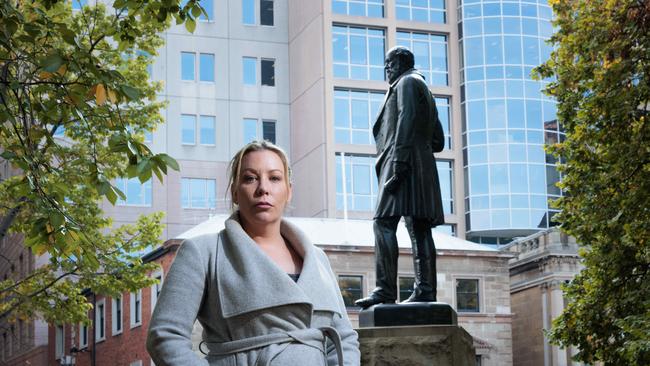Grisly history could topple Tasmanian premier William Crowther’s legacy
Proud premier or unprincipled pariah? That is the verdict about to be delivered on William Lodewyk Crowther, 137 years after his death.

Proud premier or unprincipled pariah? That is the verdict about to be delivered on William Lodewyk Crowther, 137 years after this death.
The 15th Tasmanian premier was a lauded naturalist and valued surgeon, praised for his free treatment of the poor.
However, the man enthusiastically cheered after his death in 1885 as “a grand old doctor and premier” had an indelible stain on his reputation.
In 1869, embroiled in an unseemly competition to secure the remains of William Lanne, seen then as the “last full-blood” Tasmanian Aboriginal man, Crowther was accused of severing and stealing Lanne’s skull.
Even at the time, such acts were beyond the pale, resulting in an inquiry and subsequent loss of Crowther’s hospital position.
Now the Hobart City Council must decide whether his actions of 1869 warrant the removal of his statue in 2022.
The large, elevated sculpture that dominates a corner of Hobart’s busy Franklin Square was erected in 1889 by “a grateful public and sincere personal friends … to perpetuate the memory of long and zealous political professional services rendered to this colony”.
“Perpetuate no longer” is the cry from the Tasmanian Aboriginal Centre, which is demanding the monument to a “grave robbing … racist” be “removed and destroyed”, an option on the table as the council deliberates its future.
“Crowther’s statue symbolises the atrocities committed against Aboriginal people of the time because of their race,” said the centre’s campaign manager, Nala Mansell.
“Anyone who supports the glorification of such racist and barbaric actions by demanding the statue remains can only be seen as supporting such actions.
“Anyone with any sort of conscience would understand why the statue of Crowther needs to be removed and destroyed. His actions were solely based on his racist idea that Aborigines were somehow inferior.”
The council funded a series of “truth telling” art installations at the statue last year, with some alleged historical inaccuracies. Acting lord mayor Helen Burnet said the council must now decide the statue’s permanent fate.
“The project has revealed a strong desire from the community for further information in Franklin Square about William Crowther, William Lanne and the interaction between them,” she said. “The future of the monument will be determined by the council following extensive consultation with relevant individuals and organisations.”
Ms Mansell and others would like to see Crowther’s statue replaced with a memorial to Lanne, a popular figure and pioneering whaler also known as “King Billy”. This would belatedly afford Lanne the respect he was so heinously denied by Hobart’s “gentlemen” bone hunters after his death on March 3, 1869.
Crowther wanted Lanne’s remains for the Royal College of Surgeons, London, while colleague George Stokell wanted them for the Royal Society of Tasmania.
According to accounts, Crowther invited Stokell to his house at 8pm the day after Lanne’s death. While Crowther’s wife kept Stokell talking, Crowther and his son Bingham were in the “dead house” removing Lanne’s skull. Stokell and Royal Society allies responded by severing Lanne’s hands and feet and later exhuming and stealing what was left of his body, de-boning it and drying the bones on the hospital roof.
Despite the grisly saga, some historians are fiercely opposed to the removal and destruction of Crowther’s statue.
“It’s an outrageous suggestion,” said local historian Reg Watson. “History is a science and should remain free from political influence. There are aspects of Crowther’s career that were shady but he’s part of Tasmanian history.”
A compromise could be the creation next to the statue of a monument or plaque that memorialises Lanne and explains Crowther’s ill deeds. “But it has to be historically correct, and free of political input,” Mr Watson said.
Fellow historian Scott Seymour agreed. “We can’t remove these people from history, regardless of how much we’d like to,” Mr Seymour said.




To join the conversation, please log in. Don't have an account? Register
Join the conversation, you are commenting as Logout